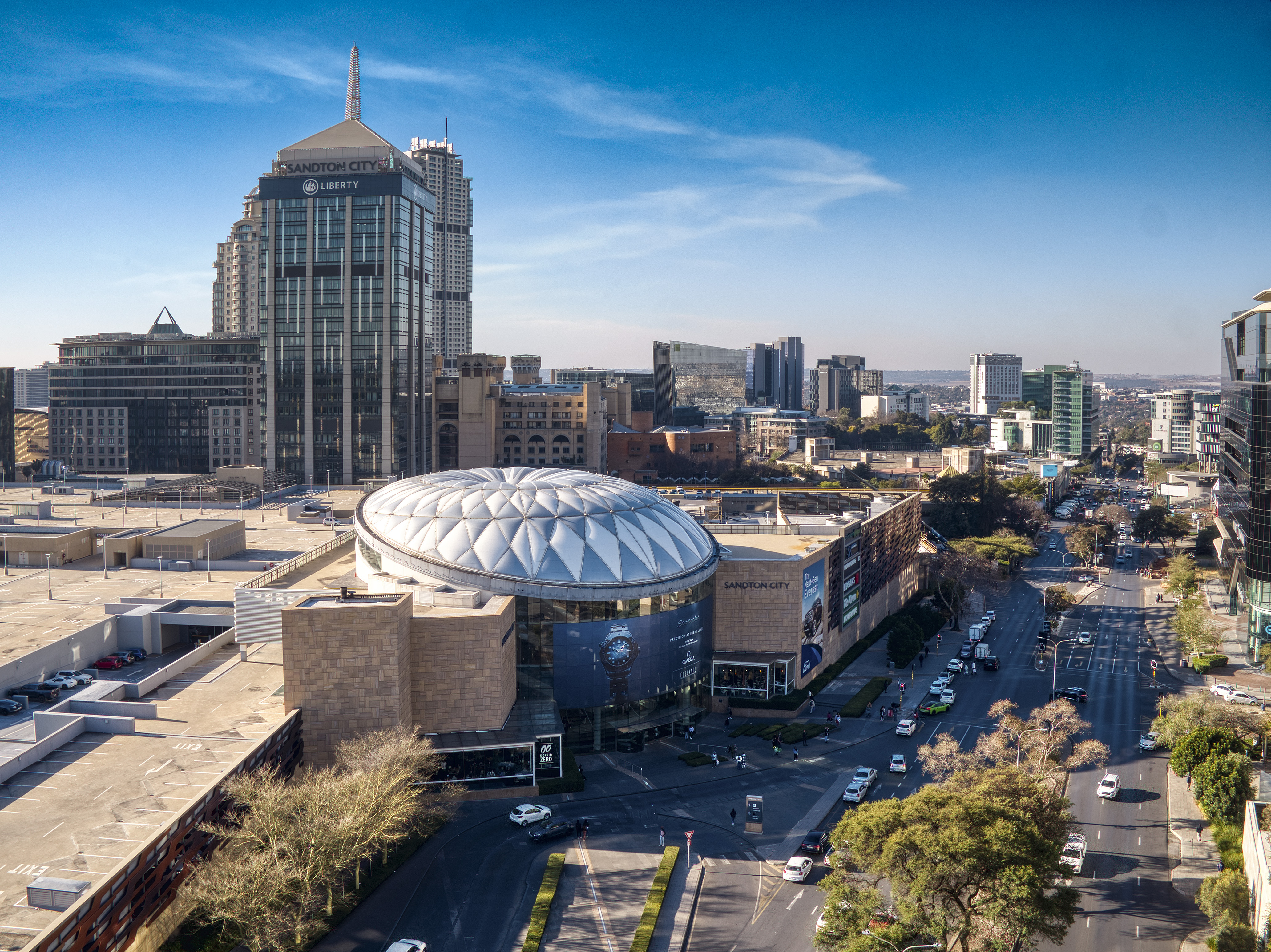In parallel to the G20, the B20 which is an official business engagement forum will also be hosted in Sandton, gathering global private sector leaders to drive inclusive economic growth and shape action-driven policy recommendations in emerging markets. The simultaneous hosting of these two influential forums presents an unprecedented opportunity for South Africa and the African continent, to influence both political and commercial discourse on urban renewal, investment readiness, and sustainable development.
Dubbed the “richest square mile in Africa,” Sandton Central is home to over 10,000 businesses across 1.1 million square metres of commercial space, including 14 of the JSE’s top 100 companies by market capitalisation. It houses many of the continent’s most prominent financial institutions, legal firms, luxury hotels, and retail destinations. Sandton is also a residential hub to approximately 300,000 people and welcomes thousands more every day through its transport systems, including the Gautrain and Rea Vaya. But none of this has occurred by chance. The ongoing success of Sandton is the result of intentional planning, smart investment, and a unique model of stakeholder-driven management through the Sandton Central Improvement District (SID).
The SID has for years acted as the custodial engine of this urban precinct, managing safety and cleanliness, investing in infrastructure and enhancing accessibility. It stands as a blueprint for how localised governance and private sector participation can meaningfully improve quality of life and investor confidence in African cities. With the G20 Summit on the horizon, Sandton’s experience offers valuable lessons in navigating the intersection between global opportunity and local execution.
A G20 Opportunity for Urban Impact
Hosting the G20 is no small feat. It requires not only significant logistical readiness but also the ability to project stability, opportunity, and global relevance. Sandton, as host precinct, is already primed for this role. The area benefits from enhanced policing, improved traffic management, a cleaner urban environment and integrated transport options. The city’s urban aesthetic, anchored by developments like Sandton City, Nelson Mandela Square, and the Sandton Convention Centre, managed by Standard Bank Group’s Investment and Asset Management’s property business line, makes it a natural stage for diplomacy, trade discussions, and strategic networking.
More importantly, the anticipated influx of foreign delegates and media attention presents an opportunity to reintroduce South Africa as a premier investment destination. From hotels and restaurants to shopping centres and commercial real estate, the economic ripple effects will be significant. The challenge lies in converting this momentary surge into long-term capital flows, partnerships, and sustained urban regeneration. That requires coordinated effort, not only by government, but by the private sector, business forums, and civic organisations.
Public-Private Partnership as a Lever for Progress
Sandton's ongoing development is proof that when private stakeholders have a seat at the table, results follow. The SID model, which uses contributions from property owners to maintain and enhance public infrastructure and services, has created a virtuous cycle, safer streets, more foot traffic, higher tenancy rates, and rising asset values. This kind of precinct-level management is a powerful complement to traditional municipal structures, particularly in contexts where city governments face capacity or budget constraints.
The G20 should catalyse a broader conversation on scaling these models to other districts across South Africa’s metros. Urban development must become less policy-heavy and more execution-focused. Government’s role must shift toward enabling, rather than owning delivery outcomes. With aligned interests and co-investment mechanisms, public-private collaboration can address long-standing issues such as safety, service delivery, infrastructure maintenance, and economic inclusion.
Sustainability Must Be Central to the Agenda
One of the G20’s core priorities is climate resilience and sustainability, an area in which South Africa has much to gain and much to prove. The country faces significant environmental risks, from load shedding and water shortages to deteriorating infrastructure, environmental degradation, and growing urban demand. As urban nodes like Sandton grow, they must adapt. This includes embracing green building principles, integrating circular economy models, enhancing water efficiency, and reducing reliance on carbon-heavy energy sources.
Sandton City precinct, for instance, continues to embed ESG principles into its operations and design. These steps are not just environmentally sound, they’re commercially advantageous. Investors and global tenants are increasingly demanding sustainable spaces. The opportunity to use the G20 platform to showcase green infrastructure, responsible urban design, and sustainability-linked investment is one South Africa should not miss.
A Call for Urban Execution
The lesson from Sandton is not about size or wealth, it’s about delivery. Too often, South Africa falls into the trap of strategy without execution. The G20 is not an invitation to draft more white papers or policy frameworks. It is a call to act.
This means fast-tracking infrastructure upgrades, improving service delivery, and ensuring the physical and digital security of delegates and residents alike. It means collaborating to ensure the Summit leaves a legacy, not just in Sandton, but across the city and beyond. It is a moment to demonstrate how public-private ecosystems can rebuild broken systems and reimagine cities as places that work.
Sandton as a Microcosm of What’s Possible
President Ramaphosa’s tour of Johannesburg’s inner city in March laid bare the challenges of urban decay. But Sandton offers a counter-narrative of what is possible when business, government, and community work together. With G20 as a milestone event, we have a window of opportunity to institutionalise this approach; to embed partnerships, drive sustainability, improve investor confidence, and rebuild trust in our urban future. As preparations accelerate, let Sandton serve not just as a venue, but as a vision for the kind of urban model South Africa should replicate. A model where public-private collaboration is not just welcomed but expected. A model where cities work for people, business, and the economy alike. DM
Author: Dimitri Kokinos Asset and General Manager of Sandton City Precinct, Zandile Makhoba Economist and Lead Specialist for Insights at Liberty Group





